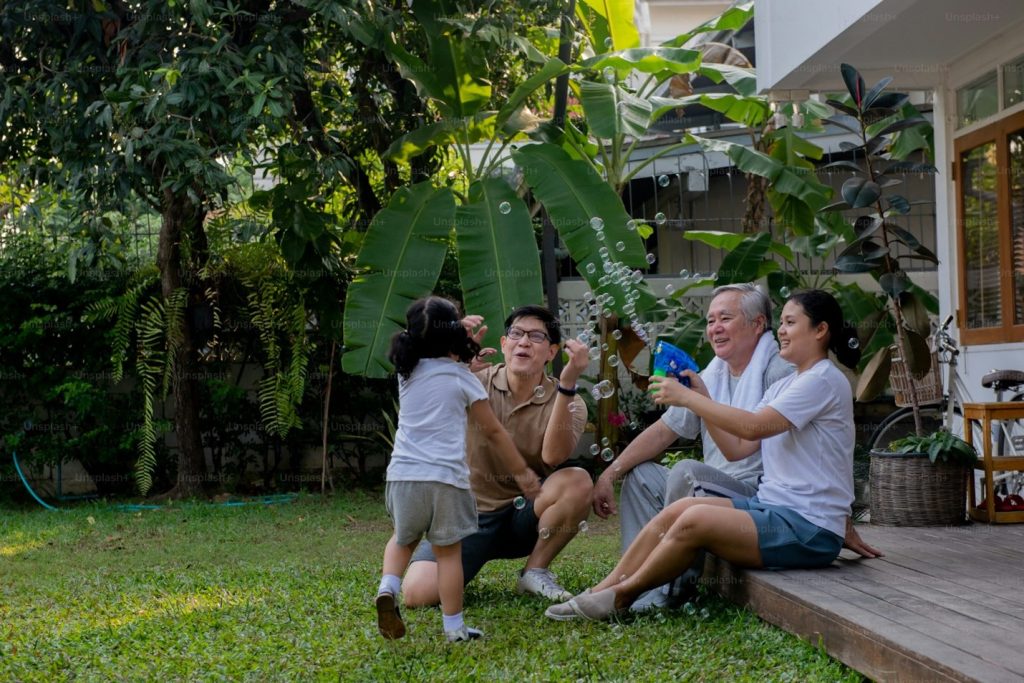Although designing front yard landscaping might seem overwhelming, with the correct approach, it can become an interesting and fulfilling endeavor. Whether your goals are to improve curb appeal, create a friendly environment, or just make your outside area more useful, knowledge of the basic principles of landscape design can guide you. Having served Chester, Delaware, and Montgomery County homes for more than 30 years, KJM Landscapes provides these professional ideas on how to design a landscape for front yard that accentuates your style and satisfies your demands.
1. Start with a Strategy
The first step in how to design a landscape for front yard is to plan your landscaping design sometime before you begin planting or digging. Think about how your yard is laid out, how your house is styled, and how naturally occurring elements of your land match.
A well-planned strategy will enable you to produce a visually appealing and coherent design. Start by outlining your ideas and thinking about where to put paths, plants, and other elements.
Important Considerations
Determine the primary use of your front yard. Do you want to design a friendly welcome area, a peaceful haven, or a venue for outdoor activities? Your design should complement your objectives.
Next, list the main focal points in your yard — maybe a front door, a big tree, a garden bed? These focal points will dictate the arrangement of your landscape.
From there, set a project budget. This will enable you to make decisions about which components to add while making sure that you remain within your means.
2. Put the Design Principles to Use
Knowing the basic principles of how to design a landscape for front yard can help you build a space that is harmonious and balanced. These principles consist of unity, proportion, balance, and variety.
Unity
Make sure every component of your design works together to provide a coherent appearance. Consistent use of colors, textures, and materials will help accomplish this.
Proportion
Think about the size and scale of your plants and features and how they fit your yard and house. While little plants could get lost in a big yard, big plants might dominate a small area. Food for thought.
Balance
Arrangements either symmetrically or asymmetrically help you achieve balance. While asymmetrical patterns give a more laid-back and natural vibe, symmetrical shapes produce a formal image.
Variety
Incorporate a range of plants, textures, and colors to liven your yard visually. Be cautious not to overdo it, though, as too much variation might result in a disorganized appearance.
3. Select the Correct Plants
The effectiveness of your landscape design depends critically on the choice of plants. Think about West Chester’s climate as well as the specific conditions of your yard — consider drainage, sunshine, and soil type.
Advice on Selecting Plants
Choose native species appropriate for the area temperature. They are more likely to thrive and call for less care. You also want to select plants with year-round appeal for seasonal interest.
In winter, evergreens give structure; in spring and summer, blooming plants bring color. Next, group plants with comparable water, light, and soil requirements together.
This ensures that all plants get the necessary care and simplifies upkeep. Plant shorter plants in front and taller plants toward the rear of garden beds. This layering technique gives your environment character and depth.
4. Add Hardscaping Elements
The non-plant components of your landscape, such as pathways, patios, walls, and ornamental accents, are known as “hardscape.” These components define various parts of your yard and offer structure.
Ideas for Hardscape Design
Make attractive paths leading guests to your front entrance. Think about materials like gravel, brick, or stone that accentuate your home’s general style.
Depending on available space, think about including a small front yard patio or seating area. This might be a peaceful place to appreciate your outside area.
Garden beds should be defined and kept looking neat using edge materials like bricks or stones. As you consider how to design a landscape for front yard, think about including a small fountain or pond to draw birds and other animals while providing a calming aspect to your scene.
5. Think About Functionality

Your front yard should be just as useful as it is beautiful. Think about how you and your family will utilize the area and design accordingly. This is how to design a landscape for front yard that serves you well.
Functional Objectives
Make sure roads and pathways are built of durable materials and large enough for easy access. Install landscape lights, too, so as to improve your yard’s nighttime safety and appeal. Walkways should be lit with path lights; spotlights should emphasize important elements.
Think about installing an irrigation system to save time on watering plants while keeping them healthy. And if you want a low-maintenance yard, pick plants that call for less maintenance and include hardscaping features to help lower the demand for ongoing maintenance.
6. Focus on Curb Appeal
Making a good impression is crucial, as your front yard is the first thing people see when visiting or passing by. Your home’s curb appeal can be greatly improved with just a few changes.
How to Maximize Curb Appeal
Frame your front entrance with plants or install a decorative wreath to make it a focal point. Symmetrical designs are equally effective. Place identical items like pots on either side of the door to produce a formal and welcoming effect.
Use color deliberately to highlight particular sections of your yard. Bright flowers next to the door, for instance, can help guests feel welcome.
Maintaining a tidy look requires keeping your lawn mowed, your garden beds weeded, and your plants pruned.
7. Environmental Concerns Matter
In addition to helping the surroundings, sustainable landscaping techniques cut down on water use and maintenance expenses. Employ these environmentally responsible ideas while planning your front yard.
Advice on Sustainable Landscaping
Incorporate drought-tolerant plants that call for less water and are more resistant to variations in temperature. In addition, organic mulch will help to promote soil health, control weeds, and retain moisture in the ground.
Install a rain barrel to gather and recycle rainwater for use on your plants. You can also create a compost bin to recycle any yard waste and kitchen scraps, turning them into nutrient-rich soil for your garden.
Let’s Create Something Great Together
Creating front yard landscaping lets you show your own flair while improving the utility and attractiveness of your outdoor space. Now that you know how to design a landscape for front yard, it’s time take action.
Following these tips and principles will help you design a front yard that not only increases curb appeal but also offers a friendly space for you and your guests.
KJM Landscapes is here to help you realize your vision, whether you’re starting from scratch or redesigning your existing landscape. Get in touch today to discuss the latest landscaping trends to make your front yard a breathtaking and useful outside area.

